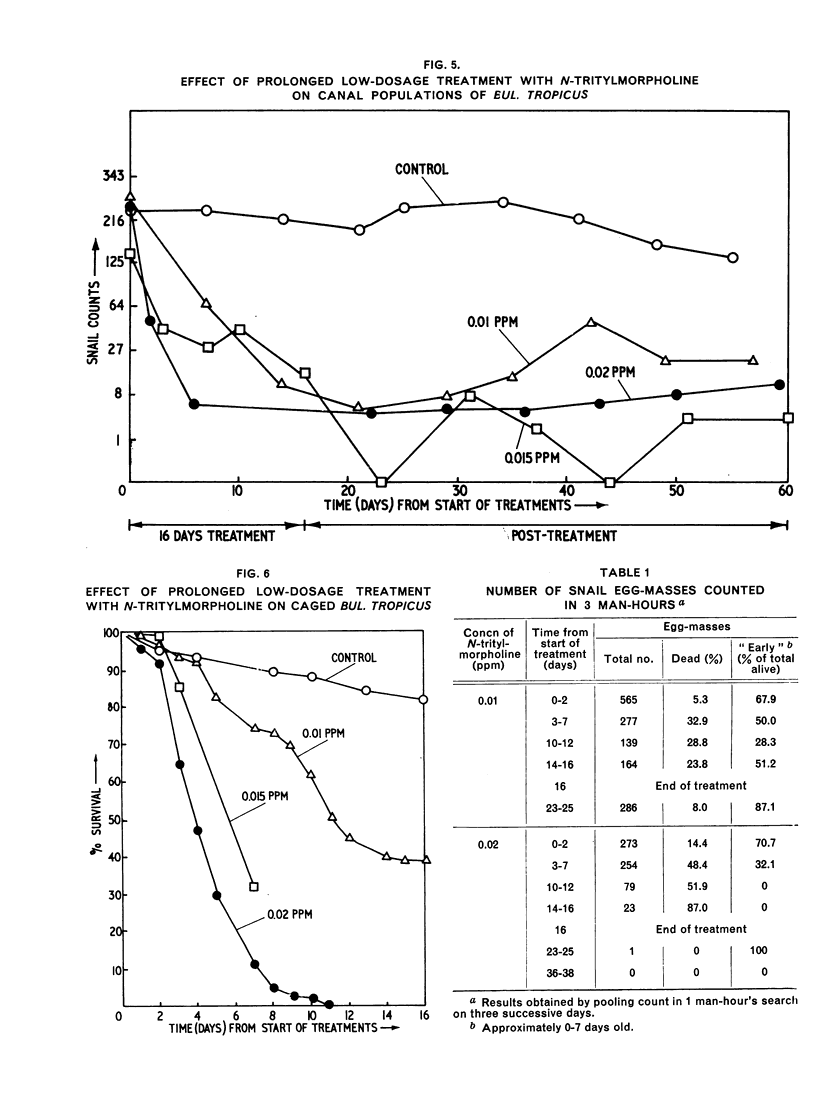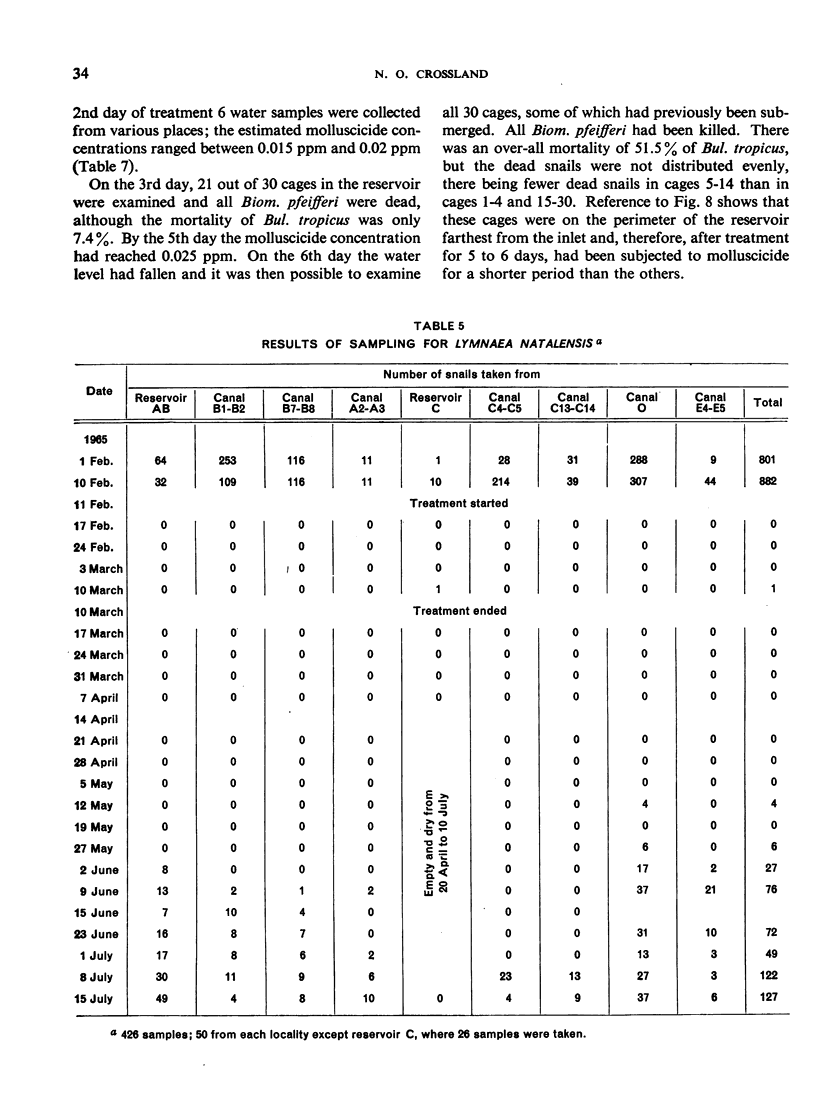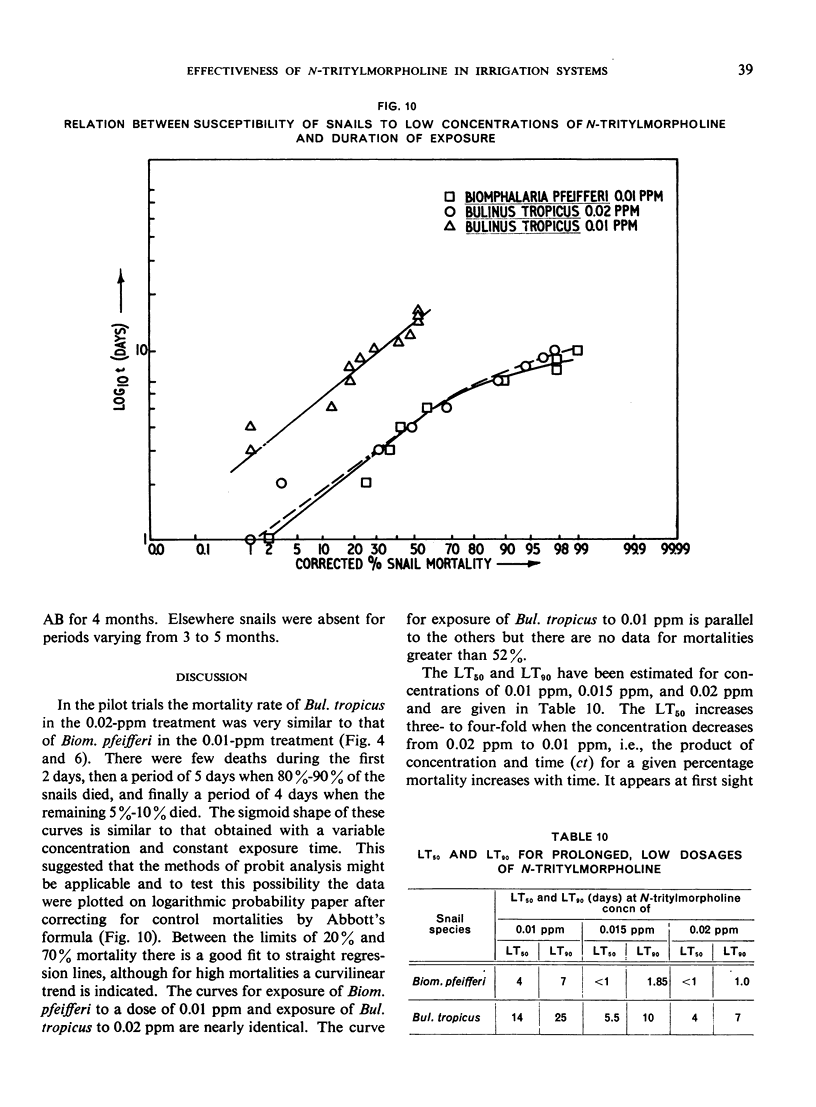Abstract
In field trials with the molluscicide N-tritylmorpholine (Frescon, WL 8008), a prolonged low-dosage technique has been developed for use in irrigation systems. In Tanzania a dose of 0.025 ppm applied for 30 days to the headworks of a 5000-acre (2025-ha) irrigation system gave effective control of Biomphalaria pfeifferi, the snail host of Schistosoma mansoni, for a period of 3-4 months. This was comparable to the effectiveness of other molluscicides and other dosage regimes but the technique had the advantages of simplicity, lower cost and lack of toxicity towards fish or other aquatic fauna. Similar trials have been carried out in Egypt and Southern Rhodesia. Theoretical and practical considerations involved in the choice of dosage regimes are discussed and a general formula is suggested for choosing dosage regimes in irrigation systems.
Full text
PDF



















Selected References
These references are in PubMed. This may not be the complete list of references from this article.
- CLARKE V. D., SHIFF C. J., BLAIR D. M. The control of snail hosts of bilharziasis and fascioliasis in Southern Rhodesia. Bull World Health Organ. 1961;25:549–558. [PMC free article] [PubMed] [Google Scholar]
- CROSSLAND N. O. A LARGE-SCALE EXPERIMENT IN THE CONTROL OF AQUATIC SNAILS BY THE USE OF MOLLUSCICIDES ON A SUGAR ESTATE IN THE NORTHERN REGION OF TANGANYIKA. Bull World Health Organ. 1963;29:515–524. [PMC free article] [PubMed] [Google Scholar]
- CROSSLAND N. O. A mud-sampling technique for the study of the ecology of aquatic snails, and its use in the evaluation of the efficacy of molluscicides in field trials. Bull World Health Organ. 1962;27:125–133. [PMC free article] [PubMed] [Google Scholar]
- Macdonald G. The dynamics of helminth infections, with special reference to schistosomes. Trans R Soc Trop Med Hyg. 1965 Sep;59(5):489–506. doi: 10.1016/0035-9203(65)90152-5. [DOI] [PubMed] [Google Scholar]
- McMULLEN D. B., HARRY H. W. Comments on the epidemiology and control of bilharziasis. Bull World Health Organ. 1958;18(5-6):1037–1047. [PMC free article] [PubMed] [Google Scholar]
- SHARAF EL-DIN H., EL-NAGAR H. Control of snails by copper sulphate in the canals of the Gezira irrigated area of the Sudan. J Trop Med Hyg. 1955 Nov;58(11):260–263. [PubMed] [Google Scholar]
- Shiff C. J., Crossland N. O., Millar D. R. The susceptibilities of various species of fish to the molluscicide N-tritylmorpholine. Bull World Health Organ. 1967;36(3):500–507. [PMC free article] [PubMed] [Google Scholar]
- Shiff C. J. Trials with N-tritylmorpholine (Shell WL 8008) as a molluscicide in Southern Rhodesia. Bull World Health Organ. 1966;35(2):203–212. [PMC free article] [PubMed] [Google Scholar]
- TEESDALE C., HADMAN D. F., NGURIATHI J. N. The use of continuous low-dosage copper sulfate as a molluscicide on an irrigation scheme in Kenya. Bull World Health Organ. 1961;25:563–571. [PMC free article] [PubMed] [Google Scholar]


